#Saint John Baptiste
Explore tagged Tumblr posts
Text

© Paolo Dala
Saint John Baptiste (Saint John the Baptist) Leonardo da Vinci (1508-1519) Louvre (Abu Dhabi, United Arab Emirates)
What Is Art?
We have long resisted offering any definition of art... In my mind, Ambrose Bierce was really into something when he offered his entry in his 1906 Devil's Dictionary:
"Art, n. This word has no definition."
It's not that there aren't plenty of definitions out there, it's just that I find them lacking in some way, or incomplete, or so watered down that they're meaningless. Take Oxford's (n. d.):
"The expression or application of human creative skill and imagination, typically, in a visual form such as painting or sculpture, producing works to be appreciated primarily for their beauty or emotional power."
Wait, human creative skill? Do we really want to say other animals are incapable of making art? And there are definitely artworks that I appreciate for neither their beauty nor their emotional power... To me, saying how you are supposed to respond confines the experience.
But is it impossible to define art? Or worthwhile to even try?
For a while now, I've been gathering quotes about art from a range of writers and artists throughout history. I'm going to share some of these with you in the hope that we might gain some understanding of this nebulous idea called art, or that you might find a definition that resonates for you.
I tend to be a fan of the ones that are intentionally enigmatic, like James Baldwin's (The Creative Process, 1962):
"The purpose of art is to lay bare the questions that have been concealed by the answers."
I like that it leaves the boundaries really wide. Like for me the ancient Greek and Roman philosophers confine art too much, like Seneca (Moral Letters to Lucilius, 65 BC) who said:
"All art is but imitation of Nature."
Which he could maybe get away with saying about the art of his time, but just doesn't hold up for me now... Aristotle (Physics, 350 BC) set his terms in a little more broadly when he said:
"Art completes what nature cannot bring to a finish. The artist gives us knowledge of nature's unrealized ends."
Which I like for its proposal that art does something nature alone does not. That art works form nature and extends it outward. Because, let's face it, if there's a competition between the power of art and nature... I'm sorry art, it's just not really a contest.
I'm reminded of a quote attributed to March Chagall (1887 - 1985):
"Art is the unceasing effort to compete with the beauty of flowers and never succeeding."
But of course not all art is trying to compete with the beauty of flowers, nor simply reproduce what's already around us. As Paul Klee (Creative Creedo, 1920) stated succinctly:
"Art does not reproduce the visible; rather, it makes it visible."
Put another way by Bertold Brecht (1898 - 1956):
"Art is not a mirror held up to reality, but a hammer with which to shape it."
It's the world-building aspect of art that many of us greatly enjoy... any other work whose new reality compels you, be it realistic or completely abstract. Artists have put forward objects and experiences that are unlikely anything naturally occurring in the world.
I like Chinua Achebe's (Truth of Fiction, 1990) description of art:
"Art is man's constant effort to create for himself a different order of reality from which is given to him."
Because art after all, is not just a transporting device for those who experience it, but for its maker as well.
Twyla Tharp (n. d.) wryly observed that:
"Art is the only way to run away without leaving home."
In the delightfully titled Vague Thoughts on Art from 1911, John Galsworthy explains it this way:
"What is grievous, dompting, grim, about our lives is that we are shut up within ourselves, with an itch to get outside ourselves, And to be stolen away from ourselves by Art is momentary relaxation from that itching, a minute's profound, and as it were secret, enfranchisement."
And that brings us to my favorite explanations of art, which is focused on this idea of art as a means of exchange. John Dewey (Art as Experience, 1934) wrote extensively about this, calling art:
"...the most effective mode of communications that exists. The actual work of art is what the product does with and in experience."
This for me is what art is all about. An astoundingly skillful painting is great and all, but for me it becomes fully what it is by being taken in by others. And I don't even mean human others, I think even penguins count! In the words of James Turrell (Harper's Bazaar, 2013):
"Art is a completed pass. You don't just throw it out into the world - someone has to catch it."
Through art we have the remarkable opportunity to step into the shoes of someone else for a while, to see it as they see it, or want to see it. And in that process we discover things about our own lives and worlds. As Thomas Merton (No Man is an Island, 1955) once said:
"Art enables us to find ourselves and lose ourselves at the same time."
Louise Bourgeois (Bourgeoism, 1988) phrased it another way:
"Art is a way of recognizing oneself, which is why it will always be modern."
For me this means that not only can an artist recognize themselves in making the thing, but the appreciator can find some aspect of themselves in their experience of the thing. Even in art work that is centuries old can be made modern in the way it is recognized and understood in the present. And that brings us to one of the most famous aphorisms of all time:
"Art is long, life is short."
Or its Latin Translation from the Original Greek (460 BC - 370 BC):
"Ars longa, vita brevis."
Now in its original context it's often thought to mean that life is short and technique or craft can take a long time to perfect. But it's most often invoked to say that art can last longer than the artist. And art is usually designed or at least hoped to have a live independent of the artist.
I like the way Kerry James Marshall (NPR News, 2017) described his own aims in making:
"What you're trying to create is a certain kind of an indispensable presence where your position in the narrative is not contingent on whether somebody likes you, or somebody knows you, or somebody's a friend, or somebody's being generous to you."
Like there's this hope that any person's art "works" without them being there to talk about it or promote it or explain it. Gerhard Ritchter (Document 7, Volume 1, 1982) once described art as:
"... the highest form of hope."
And it is indeed an act of extreme optimism and even vulnerability to create things that we admit we want to outlast us. I like how William Faulkner (Paris Review, 1956) once explained this aspiration:
"The aim of every artist is to arrest motion, which is life, by artificial mean and hold it fixed so that a hundred years later, when a stranger looks at it, it moves again since it is life."
This is exactly how I feel when reading a book or looking at art or listening to music from the past, thrown immediately and viscerally into a time and perspective different from my own but no less real. Through art, I recognize the humanity of countless other beings I'll never meet. [Friedrich] Nietzsche (The Will to Power, 1901) said:
"Art is essentially the affirmation, the blessing, the deification of existence."
Art tells me that other people really exist and existed in the past, which I know rationally, but only feel through art. For me, also embodied on that statement is the way art can function for the artist as well. I, in making something, affirm my own presence in the world.
There are many ways art perform this win-win function, serving both the artist and the appreciator. Sarah Sze (New York Times, 2013) described art as:
"...sustenance."
And it is sustenance for both artist and audience. Dorothea Tanning (Salon, 2002) said:
"Art has always been the raft on to which we climb to save our sanity."
And that is also true for both artist and audience.
I think too about this 1968 remark by Anni Albers (Interview in the Archives of American Art):
"I have this very what you call today 'square' idea that art is something that makes you breathe with a different kind of happiness..."
which brings us to another aspect of art, a big one: art as expression, and an outing of what is inside you. Dorothy Parker (Coda, 1927) once described art as:
"...a form of catharsis,"
or the releasing of emotions that yields some form of relief. Now this can be a gentle kind of thing, like when Henry Ward Beecher (Proverbs from Plymouth Pulpit, 1887) wrote:
"Every artist dips his brush in his own soul, and paints his own nature into his picture."
George Baselitz (Interview with Martin Grayford in the Telegraphy, 2007) said:
"Art is visceral and vulgar - it's an eruption..."
which feels about right when you look art Baselitz's work and also the work of many of his so-called expressive painters. I thing we tend to associate "expression" with BIG FEELING, but it really just depends on who is doing the expression and what is being expressed. "What is art", Edvard Munch (Edvard Munch: The Man and His Art, 1977) asked.
"Art grows out of grief, but mainly grief. It is born of people's lives."
...this is another of art's remarkable capacities, to bend and adapt to the whims and wills of its maker. The artist Christo (Flash Art, 1990) once said:
"The work of art is a scream of freedom."
And I love that for Christo and his collaborator Jeanne Claude, that was expressed not through a literal scream or hectic jabs of paint, but through such breathtaking installations... And a work of art isn't always an "expression" per se, sometimes it's the articulation of an idea not necessarily born of emotions. Ralph Waldo Emerson (Society and Solitude, 1870) described art as:
"The conscious utterance of thought, by speech or action, to any end is art."
And that's why, for Joseph Beuys (Artforum, 1969):
"Even the act of peeling a potato can be a work of art if it is a conscious act."
Conceptual artist Sol LeWitt (Art and its Significance, 1994) explained to us how:
" Ideas alone can be works of art... All Ideas need not to be made physical... A work of art may be understood as a conductor from the artist's mind and to the viewer's. But it may never reach the viewer, or it may never leave the artist's mind."
...which reminds me of two other statements on art. One from Ed Ruscha (Ed Ruscha, 2003):
"Art has to be something that makes you scratch your head."
And another from Marshall McLuhan (Understanding Media: The Extensions of a Man, 1964):
"Art is any thing you can get away with."
And art is indeed challenging at times. It is now, and it has been throughout history, ut that seems to be baked into the concept. Francis Ford Coppola (Interview in 99u, 2011) explained:
"An essential element of any art is risk. If you don't take a risk then how are you going to make something really beautiful, that hasn't been seen before."
And again, that's risk for both the artist and those experiencing the art. You have to take the risk along the artist to find that new remarkable thing. And art is powerful, even though it's made up, it can and has shaped my consciousness and changed my mind about things.
There are many quotes about the relationship between art and truth , like [Pablo] Picasso's (Picasso on Art, 1972):
"Art is a lie that makes us realize truth."
...and Theodor Adorno's (Minima Morlia, 1951):
"Art is magic delivered from the lie of being truth."
...but my favorite of these is Wangechi Mutu's (33 Artists in 3 Acts, 2014):
"Art allows you to imbue the truth with a sort of magic, so it can infiltrate the psyches of more people, including those who don't believe the same things as you."
Empires and governments have understood the power of art and used it to varying ends. But the power of art is also wielded by individuals, and collaborating groups of individuals, and that's part of what makes it such a compelling and fulfilling activity to engage in. Both the making of it, and the experiencing of it - alone and together in groups.
It's hard to pin down this thing we call art because it is always changing. As a concept, art is a slippery and flexible and ephemeral, used to describe an enormous range of activities and objects and experiences. In Elbert Hubbard's (Little Journeys to Homes of Great Teachers, 1908):
"Art is not a thing, it is a way."
It's the open-ended, elastic definitions of art that get the closest to me to describing what it really is. [Marcel] Duchamp (Eros C'Est La Vie, 1975) once offered this one:
"What art is, in reality, is the missing link, not the links which exist. It's not what you see that is art; art is the gap."
I love that gap! For me, that's where the magic happens. It's that space between the art and the appreciator, the artist and the art. It's the gap between my response to a work of art and your response to it. It's the air between all of us all as we make meaning out of the world around us.
I don't think we need a definition of art, but if we did, would think it would be all of these definitions, and all of the many others not included here. And then the challenge is to hold all of them all in our heads at the same time without deciding on any one of them because each of us decides what this thing is called art. This way, art can continue to shift and expand and cater to the needs of those who feel compelled to make it, whatever it is.
Deciding once and for all what art is would exclude those who came along and want to push in a new direction. It would limit what's possible now, and moving forward. It should be an open and evolving concept capable of holding your definition of art along with everyone else's. But I do have to warn you, you have to be careful because [according to Marcel Duchamp (Ritcher, Dada: Art and Anti-Art; 1964):
"Art is a habit forming drug."
What is art for you?
Sarah Urist Green The Definition of Art
#Sarah Urist Green#The Definition of Art#Art#Painting#Leonardo da Vinc#Saint John Baptiste#Art History#Museum#Louvre#Abu Dhabi#United Arab Emirates
0 notes
Text

Sevillian School Head of St. John the Baptist
Polychrome terracotta, 27 x 20 x 20 x 16 cm; 4 x 45 x 31 cm (base), 18th century
3K notes
·
View notes
Text




Hey folks, I can finally release a few illustration I made last spring for Casket Dealer's debut EP Letters from the dead, featuring some martyrs.
You can find prints here and preorder the album here
#martyrs#martyrdom#saints#saint lawrence#saint bartholomew#saint john the baptist#saint sebastian#body horror#artists on tumblr#digital art#dark art
659 notes
·
View notes
Text

Saint John in the desert, Domenico Veneziano, 1445-50
#saint john the baptist#desert#domenico veneziano#15th century#art history#art#italian art#aesthethic#painting#rinascimento#national gallery
221 notes
·
View notes
Text

Filippo Lippi - Saint Jerome in the Desert with Saint John the Baptist and Saint Ansanus. 1455
83 notes
·
View notes
Text

Antonio Salai, Saint John the Baptist, after Leonardo da Vinci, ca. 1520
#antonio salai#gian giacomo caprotti#oreno#saint john the baptist#leonardo da vinci#renaissance#italian art
49 notes
·
View notes
Text

Happy Feast Day
St. John the Baptist
The Passion (Beheading) of St. John the Baptist, pray for us! “His head was the price of a dance.” St. John Vianney
Prints, plaques & holy cards available for purchase here: (website)
55 notes
·
View notes
Text

Juan Sánchez Cotán (Spanish, 1560-1627) Saint John Baptist, Detail, ca.1603-05 Museo de Bellas Artes de Granada Agnus Dei, qui tolis peccata mundi, miserere nobis. Agnus Dei, qui tolis peccata mundi, dona nobis pacem.
#Juan Sánchez Cotán#spanish art#spanish#spain#saint john baptist#1600s#art#fine art#european art#classical art#europe#european#fine arts#oil painting#europa#mediterranean#christian art#christian#christianity#christentum#catholic#catholicism#catholic art#Juan Sanchez Cotan#lamb of God#Agnus Dei
74 notes
·
View notes
Text

The Wilton Diptych (1395–1399)
The kneeling King Richard II is presented by Saints John the Baptist, Edward the Confessor and Edmund the Martyr, each holding their attribute. In the right-hand panel the Virgin Mary with the Christ Child in her arms is surrounded by eleven angels, against a golden background and field of delicately coloured flowers.
#middle ages#medieval#mediaeval#england#altarpiece#richard ii of england#english#king#saints#kings#saint#john the baptist#edward the confessor#edmund the martyr#virgin mary#christ child#angels#art#christianity#christian#religious art#religion#history#gothic#heraldry#house of wessex#anglo saxon#anglo saxons#flowers#richard ii
79 notes
·
View notes
Text
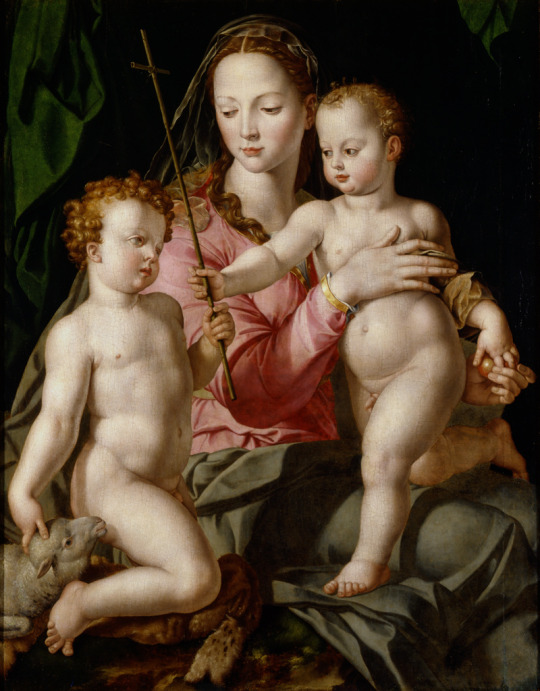
Madonna and Child with the Infant Saint John (1540-1560) by a Follower of Agnolo Bronzino (Italian, 1503-1572), oil on poplar wood, 40 3/8 x 31 1/2 inches, Portland Art Museum, Portland
#madonna and child with the infant saint john#follower of angelo bronzino#painting#oil on poplar wood#portland art museum#portland#oregon#christ child#madonna#cross#mannerism#mannerist#oil painting#poplar#saint john the baptist#16th century#religious painting#christ#jesus#jesus christ#my upload
67 notes
·
View notes
Text
Favourite series: 008







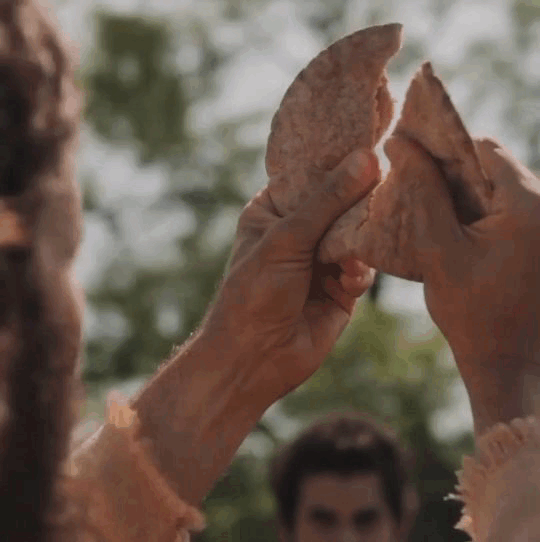
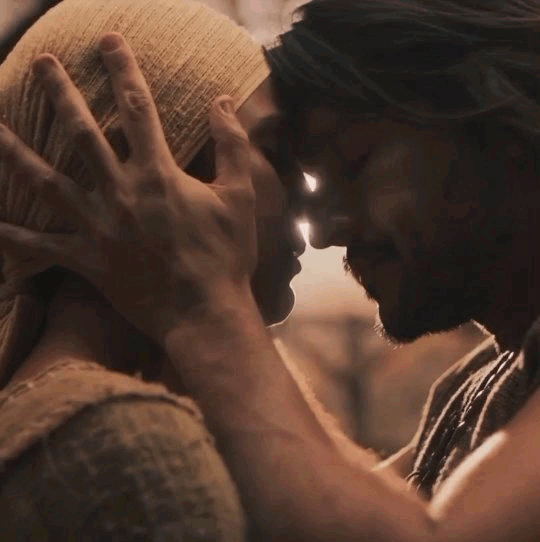
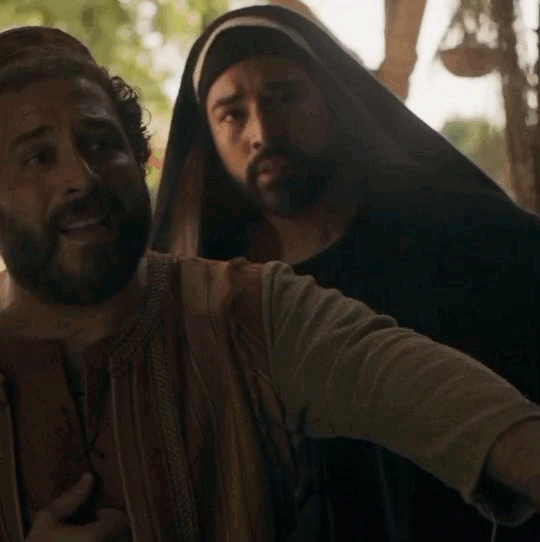
directed by Dallas Jenkins(2017-)
Prev || Next
#the chosen tv show#the chosen tv series#the chosen series#the chosen#jesus#jesus christ#my favorite#my favourite#favourite tv shows#simon peter#saint john#mary magdalene#john the evangelist#john the baptist#judas iscariot#disciples of christ
59 notes
·
View notes
Text

Spanish School Salome receiving the head of St. John the Baptist
Oil on panel, 98 x 62 cm, 17th century
99 notes
·
View notes
Photo
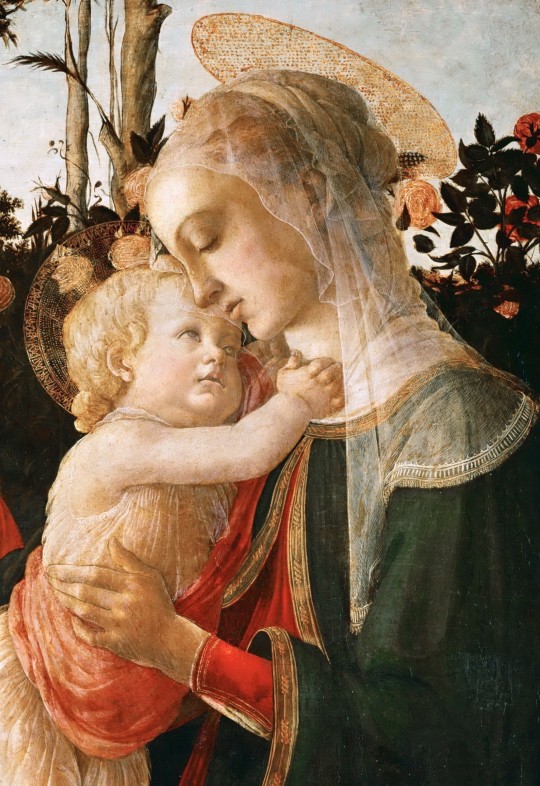
Sandro Botticelli, Madonna and Child with St. John the Baptist, detail, c. 1470–1475.
Musée du Louvre, Paris, France.
#1470#painting#sandro botticelli#madonna and child#detail#my edits#st. john the baptist#botticelli#musée du louvre#louvre#alessandro di mariano di vanni filipepi#Mythological painters#Mythological#italian#Renaissance painters#quattrocento painters#madonna#saint john#saint john the baptist
335 notes
·
View notes
Text

La Cathédrale et la Fountaine Saint-Jean-Baptiste, Lyon, Auvergne-Rhône-Alpes, FRANCE
#cathedrale#cathedral#catedral#fountaine#fountain#fuente#saint jean#saint john#san juan#baptiste#bautista#lyon#auvergne rhône alpes#france#francia#europe#europa
108 notes
·
View notes
Text
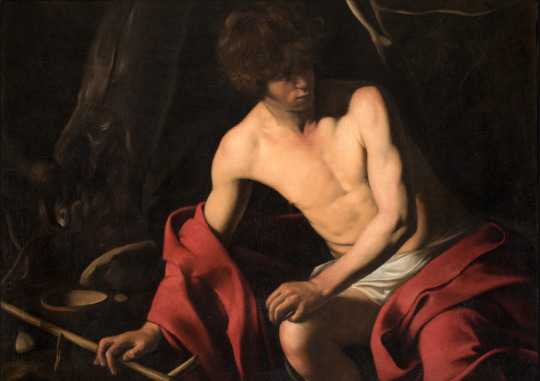
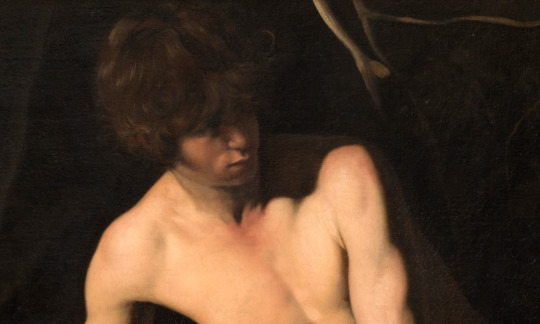
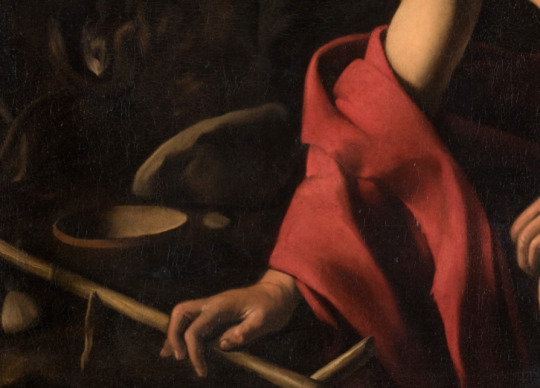
Saint John the Baptist, Caravaggio (Michelangelo Merisi), 1604-06
#art history#art#painting#italian art#17th century#baroque art#aesthethic#caravaggio#michelangelo merisi da caravaggio#saint john the baptist#gallerie corsini#rome#dark academia#catholic aesthetic#palazzo barberini
312 notes
·
View notes
Text

Jan Mostaert - The Head of Saint John the Baptist Surrounded by Angels. 1520 - 1540
170 notes
·
View notes